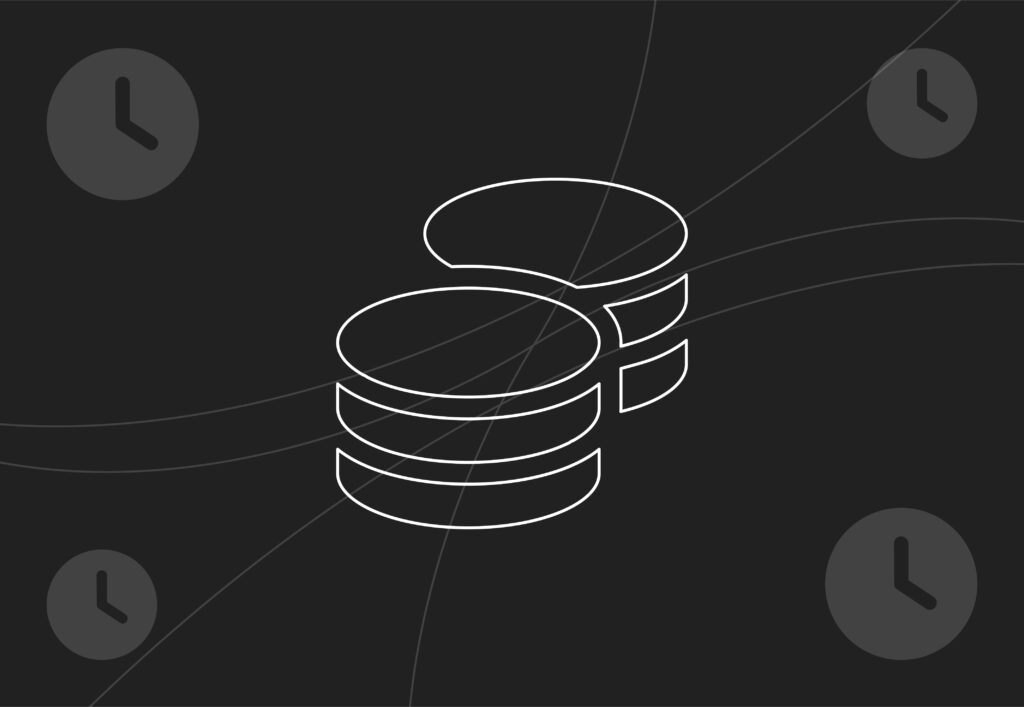
Leveraging analytics for performance growth

Data is everywhere, and it’s never been more prevalent in the marketing landscape. From website visits to social media clicks, conversion numbers, email open rates, and purchase history, we’re surrounded by an abundance of data that holds significant insights that are waiting to be unlocked with a little effort.
Despite this, marketers easily become stuck in ‘reporting mode’, creating a huge amount of dashboards and spreadsheets to highlight results, but not doing enough with the data to unlock meaningful actions to improve the results further.
It’s time to break that cycle. We’re going to explore some of the tools that matter, the metrics you need you be working with, and some ideas to break away from passive reporting and utilise the data as a tool for growth. Whether you’re working with paid ads, organic search, conversion rate optimisation, or any other area of marketing, the goal is the same: smarter decisions, stronger performance, and a clear impact on the bottom line for your clients.
The evolution of marketing analytics
If we go right back to the beginning of digital marketing analytics, it wasn’t platform-based as such; it was completed primarily by analysing server-log data, and the first tool to launch a more user-friendly way to see that data was Analog in 1995.
But the evolution of marketing analytics as we know it now comes back to tools such as Urchin (later purchased by Google and developed into Google Analytics). It was these tools that transformed how we understand user behaviour and marketing performance online. Back then, the focus was on the most basic of metrics: pageviews, average time on site, etc.
Nowadays, marketing analytics is much more comprehensive, it’s smarter, it unlocks insights into how users interact with brands across platforms and devices, it helps uncover the why behind the what, and there’s also a more comprehensive toolset available for marketers to use.
With platforms like GA4 shifting toward event-based data and privacy regulations reshaping how we collect information, marketers are being asked to think deeper and act faster. The rise of machine learning, server-side tracking, and predictive modelling has opened the door to richer customer insights, but only for those who are ready to move beyond vanity metrics. Analytics is so much more than just measuring what happened. It unlocks the opportunities to influence what happens next.
Core analytics tools you need to master
Web and behaviour analytics
- GA4 – Perhaps the gold standard in terms of usability and familiarity for marketers. An excellent tool for analysing different marketing sources at a more neutral level, although there is a slight weight towards Google products when it comes to attribution. The event-based model also allows a better understanding of how users interact across devices/platforms.
- Microsoft Clarity – An excellent tool for heatmapping and session recording. It can provide a much clearer understanding of why and where users perhaps bounce off a website, allowing you to preempt it in the future by rolling out changes to prevent it. Other platforms like HotJar are very similar, but I recommend clarity as it’s free of charge and just as featureful.
- Privacy-focused analytics – There are a number of platforms available now which align with GDPR standards and allow aggregated statistical tracking without needing consent. They don’t rely on cookies, they’re not tracking ‘user-data’, they’re not tracking cross-website/platform, and they’re not using the collected data for anything other than statistics and reporting. We always recommend that you run these past your internal DPO (data protection officer), but tools like Plausible, Fathom, and Matomo all have out-of-the-box solutions that they have confirmed with the EU are compliant with GDPR without consent.
Attribution and journey mapping
- Ad-platform attribution – Understanding how attribution works on ad platforms will help you better understand the data being presented in reporting. Combining these insights with the data being presented by a more neutral analytics tool will help create a more accurate picture of the results being driven by your ads. Social media platforms and search ads will always push to take as much credit as possible for conversions and will often overreport on the results they’re driving, even if someone has so much as scrolled past an ad weeks ago.
- UTM frameworks – UTMs are vitally important for analytics tools to understand where your traffic and conversions are coming from. In the current climate of privacy regulations and browser restrictions, we’re seeing more and more data from URLs being stripped out, so you can’t rely on the GCLID or the FBCLID for example making it through the final URL, and that means without your UTMs, you’ll be losing attribution on that traffic and impacting your ad reporting. If you’re using GA4 as your primary analytics tool, Google has a standard required for UTMs that you can find here. Make sure that across platforms, you’re using consistent tags.
CRM and customer analytics
- CRM platforms – These provide crucial analysis opportunities beyond what happens on the website or app. They’re not just for contact storage; they can be used to understand what happens to users AFTER they have converted. What does your lead nurturing process look like? How does a lead interact with emails? Where are they within your sales pipeline? Combined with Analytics data, what does the customer journey look like beyond the website interaction? All of these can be answered with CRM platforms such as HubSpot, Salesforce, Zoho and more. You can also more accurately track the lifetime value and retention rates of customers based on first-party data that won’t always be available to third-party analytics.
- Customer Data Platforms – Using tools like Segment or Bloomreach, you can work to unify behavioural data, transactional data, and demographic data across different platforms. This opens up opportunities for better personalisation and attribution at a much bigger scale. Perfect for businesses with huge amounts of data to work with.
BI and advanced analytics
- Looker Studio & BigQuery – GA4 has data thresholds; it won’t be presenting you with the complete dataset for numerous reasons, and this is why taking time to learn and understand BigQuery and how that can work with Looker Studio is crucial for being able to analyse the fuller picture of what is happening on your website or app. It also enables the ability to build custom dashboards based on real-time data.
- Tableau or Power BI – If you’re combining multiple datasets and blending to produce results and actionable insights, knowledge of tools like Tableau or Power BI is an absolute must. Advanced analysis and visualisation of your data will unlock insights you wouldn’t even expect. It can be a steep learning curve, but the time investment is certainly worth it.
Metrics that matter: beyond the basics
Out of the box, tools like GA4 will present you with the basic metrics, think views, events, average time on site, conversions (when set up), conversion rate, etc, all of the things you’d have gotten used to over the years using Universal Analytics. What isn’t always obvious is the other events available, but that don’t appear in the standard out-of-the-box reporting. But alongside those are events that can help create a bigger picture from your data; some exist, some would be created as custom metrics, but in general, look to add the following if they’re relevant to your business.
- CPA (cost per acquisition)
- CPL (cost per lead)
- CAC (customer acquisition cost)
- MQL/SQL (through offline conversions linked to your CRM)
- Lead to MQL/SQL rate
- Revenue per session
- Abandonment rates for baskets and forms
- LTV (customer lifetime value)
- Repeat purchase rate
- Churn rate
- Time between purchases
- Time lag to conversion
- Load times
- Consent opt-in rates
- Profit per session
- Micro-conversion rates
This isn’t an exhaustive list, but it should give you an idea of what is possible with a little extra work. Investing the time now will save you time in the future when you’re looking to make efficiencies and maximise budgets.
From reporting to actionable insight
You’ll likely have some lovely dashboards built for your reporting; you’ll know what happened and when, but you won’t know from those dashboards why it happened. Even more crucially, no report is going to tell you what you do next. The plan moving forward can only come from your expertise.
For example, you’ve seen a drop in the number of conversions on your website. You have the data to report it, but you need to dig deeper to understand why it happened. Where is the common drop-off point? Could it be a technical issue? Is it device-specific? Page specific? Were changes made to the website that perhaps weren’t tested before launch? Or has your abandonment rate increased? Something your new events could open up insight into.
Armed with more information as to WHY something happened, you can now use the ICE framework to plan out how you’ll overcome it. You have the Impact, the data has given you the Confidence that you know what is wrong, and you just need the Ease element for whatever is next in terms of planning to fix it.
The more you work on this, the more comfortable you will become with handling the data and combining multiple sources to correlate quantitative and qualitative data points. You’ll be confident in combining analytics data with customer data and session recordings, for example. You’ll also be more confident in approaching other teams who will be responsible for rolling out changes. Rather than just asking a developer to change something, you’ll be able to properly show them why it needs to happen and why it’s important.
Avoiding common pitfalls
Tracking everything but analysing nothing – You need to dedicate resources and time to analysing the data that you’re tracking. Tracking more events isn’t going to automatically equal a higher level of insight; you need to work with the data to extract the insights that could be there.
If you’re still using last-click attribution, stop – GA4 uses data-driven attribution by default to align conversion credit with different sources that impacted the conversion. The downside is that GA4 doesn’t have all of the context from other platforms, especially those that aren’t owned by Google. For example, GA4 cannot see your view-through conversions from top-of-the-funnel ads on Instagram. That’s why combining the data and visualising the multiple sources is so important to getting a better understanding of how your marketing efforts are working. All of your conversions might be attributed to Google Ads, but did the brand awareness campaign on Facebook help drive them there? You won’t know without putting the effort in.
Privacy limitations – It’s becoming increasingly difficult to accurately track website visitors. You’re contending with consent mode, privacy laws, browser restrictions, ad-blockers, and that, unfortunately, means that no matter what tool you use for marketing analytics, there will always be an element of data loss. You can fill the gaps with modelling, recover some through server-side tracking, and combine data sources, even make assumptions based on your expertise, but data loss is always something you should be considering when analysing the data.
Contextualise your data – sharing your reporting isn’t enough to spark change, you need to contextualise the data with real insights as to why the data is what it is. Explain the reasons behind it, share the insights you’ve uncovered using the methods we’ve mentioned; it’ll help your teams understand why they’re doing what they’re doing and the expected outcome.
Building a data-led culture
Marketing analytics go far beyond the tools, and it’s more of a mindset; some decisions are simply common sense, while others require expertise and understanding, and it’s by using the tools and dedicating time to understanding them that you’ll build the confidence you need to present the results with the context you’re currently lacking.
You can work on building a data-led culture by making the data easier for others who aren’t as familiar with it as you by demystifying it. When you share data and insights, use simple language and clear visualisations to showcase what you need to. Working with other teams, be sure to encourage hypotheses and not just hunches. Set your targets, what will completing a change to a landing page achieve? Are you expecting an uplift in conversions? If so, by how much, based on your deeper understanding?
Finally, make your reporting part of your process, encourage the use of data to help push things forward, not just as a reflection on how things were. Be confident in your approach, and know that ultimately, not everything will work out exactly as you planned, but you’ll be ahead of the game compared to ignoring it altogether.



